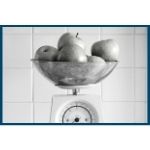Marinated Peppers
Last year I used an oil-vinegar solution with lemon juice to pickle my roasted peppers, but the oil solidified and looked slimy. The taste was also too sweet-sour for me.
I found some recipes for marinated peppers that I thought I would give a try. The description of why this writer loves roasted peppers resonated with my rationale:
Roasted peppers are a delight. I use them as appetizers like the pickled peppers, but also in sauces, stews and simply draped over roasted or grilled meat. Roasting — especially over an open flame — sweetens and softens the pepper, and more importantly, allows you to be rid of the indigestible skin. – Hank Shaw
Store bought peppers looks lovely with a squarish shape, but cost $2 each in the summer for red, yellow or orange; more in the winter. You can get them for 75c or 3 for $1 or 2 if you stop by a farmers market or a road-side stand. FYI this recipe made three pint size jars from 3 small and 4 large red peppers. I could have done with one more pepper. Note to future self: don’t split the recipe into jam-jars or there won’t be enough liquid.
For this recipe you need vinegar, sterilized jars and lids, olive oil and kosher salt (optional).
For vinegar the author recommended: sherry when I want them to be Spanish, cider vinegar for Portuguese, red wine vinegar for Italian or Greek, and white wine vinegar for green peppers.
I’ve shared how to roast peppers before. Key thing is to let them cool/steam before peeling (I used a covered pyrex dish rather than plastic) and don’t run them under water – it will wash away the flavour.
In addition to my pyrex dish, I got out a big measuring cup and a shallow bowl, plus my food-scrap bowl for the seeds and skin (these go in the compost). This is why:
- the pyrex dish will be holding whole, cooled peppers. Once they are all processed, don’t rinse it out, but do discard any seeds or skin.
- the shallow bowl was used for when you start to clean a new pepper – slit the base to let the juices run out. Discard any seeds and reserve this liquid. This bowl will later be used to hold the vinegar
- the big measuring cup is used to hold the cleaned pepper flesh. I cut mine lengthwise into quarters or eights. As you are dredging the peppers, discard any seeds and reserve this liquid.
Do all the peppers before proceeding.
- Once all the peppers are cleaned and in the measuring cup, drain the liquid from the shallow bowl into the measuring cup.
- Add to the shallow bowl some vinegar (I used about ¼ cup). Dredge each pepper through the vinegar a few times to coat. Place it in the pyrex bowl.
Do all the peppers before proceeding.
- Into the sterilized canning jars, pour a little vinegar; enough to cover the bottom of the jar.
- Pack in the peppers, leaving a ½” space at the top. Then, with a butter knife or chopstick, run down the sides of the jars, releasing air bubbles. You will notice the level of liquid drop. Fill it with the salted pepper juice — but still leave room at the top of the jar.
- Once the air is out, the vinegar-pepper juice should be right at the top of the level of the peppers. Pour in olive oil on top of everything to a depth of ¼”.
- Screw the lids on the jars and process the jars in a hot water bath for 10 minutes just in case.
It will last a year, although the peppers will soften over time so you may see some discoloration as the colour from the pepper dissolves. Once you open a jar, keep it in the fridge. If it smells bad or shows signs of bubbling, do not eat!
I’m doing pickled beets next, and some are from my own garden (topped up with farm fresh ones picked yesterday). Super excited!
